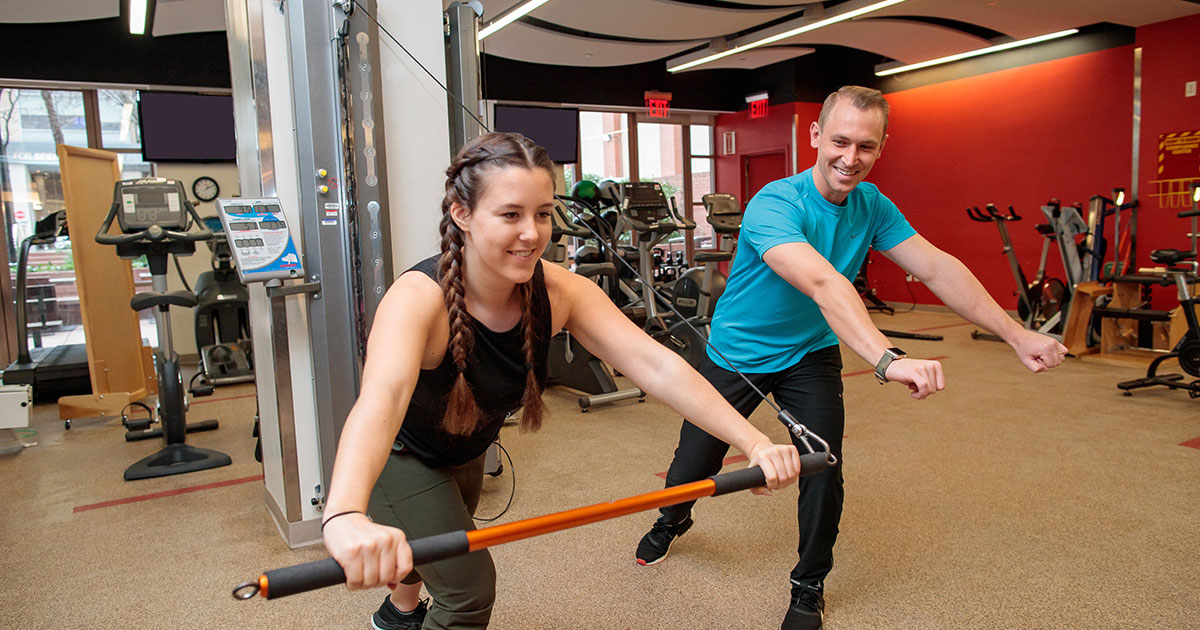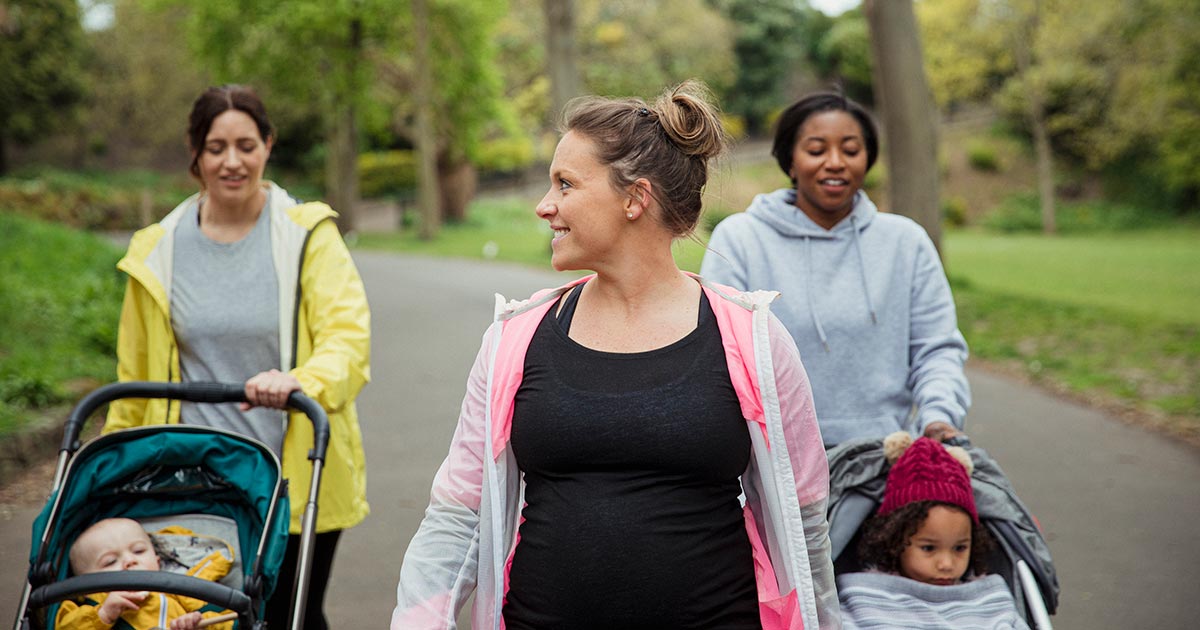Diastasis Recti: What It Is and How to Fix It
Advice to improve your movement, fitness, and overall health from the world's #1 in orthopedics.
All pregnant women experience diastasis recti, a separation in the abdomen that occurs when the tissue between the rectus abdominis muscles—the two sides of your “six pack”—stretches or tears at the central vertical line. After delivery, the condition persists in up to 60% of women.

“The abdominal muscles and surrounding tissue have to stretch to accommodate for the growing fetus over the course of pregnancy,” says Ellen Casey, MD, a sports medicine physician in the Department of Physiatry and the Women’s Sports Medicine Center at HSS.
Diastasis recti is usually painless, though it can cause an abnormal sensation or discomfort, Dr. Casey says. Some women with diastasis recti notice a distension or protrusion of their abdomen when they eat or drink, she says. Women with persistent diastasis are often left to seek answers about how to rebuild their core.
How to Know If You Have Diastasis Recti After Pregnancy
One clear indication of diastasis recti is a doming of the abdominal muscles when you put pressure on your core, says Anna Ribaudo, PT, DPT, OCS, Capp-OB, a clinical lead and board certified orthopedic clinical specialist at HSS who is certified in perinatal care. Instead of the abdomen maintaining a flat, horizontal plane during a crunch exercise, for instance, women with diastasis recti might see their abdominal muscles protrude into a tent-like shape.
If you’re unsure whether you have diastasis recti, a simple self-test can check for an abdominal separation:
- Lie down on your back with your knees bent and feet flat on the floor.
- While lifting your upper body slightly, as if to do a crunch, use two fingers to gently push down into the center of your stomach just above your belly button, at your belly button, and just below.
- If you feel more than two fingers-width of space between your abdominal muscles, you likely have diastasis recti. (A musculoskeletal ultrasound can determine the exact size of the muscle separation.)
Notice how many fingers fit between your separated muscles—that’s the width of your gap—and also whether you feel pressure of the abdominal muscles against your fingers. That pressure is a good sign, Ribaudo says, indicating the muscles maintained some strength. All told, she says, the severity of the diastasis recti depends on the length and width of the gap and the strength of the surrounding abdominal muscles.
How to Improve Your Diastasis Recti
Don’t attempt to fix your abdominal separation until after giving birth, Ribaudo says. “If you have it during pregnancy, it’s not going to go away.”
Healing your diastasis recti after childbirth is as much about knowing what not to do as what to do, Ribaudo says. Everyday activities that put pressure on your core, such as bearing down during a bowel movement or holding your breath when you pick up your baby, can exacerbate the abdominal separation. Here's how to heal it.
- First, focus on being able to contract your abdominal muscles again. This means drawing your belly button to your spine—a cinching of your core that gives you more stability and takes pressure off your rectus abdominis. You can incorporate this exercise into your day by holding the contraction for up to a minute in a variety of positions, such as when you’re squatting to pick up a toy from the floor or taking a stroller walk to the park. “You can do an abdominal contraction any time,” Ribaudo says. “Every single time you do it is one less time you’re pulling on that diastasis.”
- Eventually, you can progress to exercises like bicycles and planks, as long as you can maintain the abdominal contraction without causing doming. “If your abdominals are protruding,” Ribaudo says, “they are not strong enough yet to progress with this exercise.”
- You can also try a specific exercise program targeted at diastasis recti. The 12-week, video-based Every Mother program is one recommended option. In 2021, Dr. Casey led a study published in the Journal of Women’s Health Physical Therapy that showed the program was effective at reducing the distance between the participants’ rectus abdominis muscles. It was also shown to reduce diastasis recti-related symptoms, such as urinary incontinence and low back pain.
The Every Mother program primarily employs an abdominal draw-in maneuver; participants are encouraged to pull their belly button toward their back while in a variety of body positions as the instructor cues them to cinch tighter. (The HSS study did not compare the program to any other diastasis recti exercise regimen.)
When to Get Help with Your Diastasis Recti
If you’ve been working steadily to heal your diastasis recti, Ribaudo says, you should see noticeable results within six months. “The other component of diastasis is the contractibility strength of your core and ability to engage it with activities,” she says. “So although there still may be a separation, how the muscles function is more important.”
You should see a healthcare professional with expertise in musculoskeletal conditions related to pregnancy and delivery, such as a physical therapist, if your diastasis recti occurs with other related issues, such as pelvic floor dysfunction, pain during intercourse, or incontinence four months or more after childbirth.
Published 7/28/2023




